General description
Nesprin-1 (UniProt Q8NF91; also known as Enaptin, Myne-1, Myocyte nuclear envelope protein 1, Nuclear envelope spectrin repeat protein 1, Synaptic nuclear envelope protein 1, Syne-1) is encoded by the SYNE1 (also known as C6orf98, EDMD4, KIAA0796, KIAA1262, KIAA1756, MYNE1, SCAR8) gene (Gene ID 23345) in human. SYNE1 gene encodes multiple intracellular linker/scaffold molecules as a result of alternate start codons usage and splicings. Structurally, nesprins have a central rod domain composed of spectrin repeats. Nesprin-1 isoforms giant/4/5/6/7/10 and nesprin-2 isoforms giant/p32CH/NUANCE-N-33 have two N-terminal CH (calponin homology) domains that bind the actin cytoskeleton. Nesprin-1 isoforms giant/beta/alpha/4/beta 2/alpha 2/myne-1 and Nesprin-2 isoforms giant/2/epsilon2/beta1/alpha1/alpha2/gamma/beta2/FLJ56122/FLJ55476/epsilon1 contain a C-terminal transmembrane KASH (Klarsicht-ANC-Syne-homology) domain that resides in the outer nuclear membrane and bind across the luminal space to the SUN (Sad1, UNC84) type II inner nuclear membrane proteins, SUN1 and SUN2, to form LINC (Linker of Nucleoskeleton and Cytoskeleton) complexes that link the cytoskeleton and the nucleus. Human SYNE1 gene is among the top ten loci conferring risk for the five major psychiatric disorders, schizophrenia, bipolar disorder (BD), major depression, attention deficit-hyperactivity disorder (ADHD), and autism spectrum disorder (ASD), as well as multiple other neurological and neuromuscular disorders.
Specificity
Epitope region is present in, human isoforms 1 (Giant; Enaptin)/2 (Beta)/3 (Alpha)/4/5/8 (Beta 2)/9 (Alpha 2)/11 (myne-1; 131kDa), mouse isoforms 1 (Giant; Enaptin)/2/3 (Syne-1A)/4 (Syne-1B)), and rat Nesprin-1 (UniProt Q8VHJ9), but absent from human spliced isoforms 6/7/10 (drop1)/12 (GSRP-56; 56 kDa), mouse spliced isoform 5 (Enaptin-165), or rat spliced isoform CPG2 (UniProt Q63128) reported by UniProt (Q8NF91, Q6ZWR6, Q8VHJ9, Q63128). Clone 7A12 does not reacts with nesprin-2, but stained centrosome in acetone/methanol-fixed HeLa cells due to uncharacterized cross-reactivity (Randles, K.N., et al. (2010). Dev. Dyn. 239(3):998-1009).
Immunogen
GST-tagged recombinant human SYNE1 isoform Beta C-terminal 121-a.a. fragment fused to full-length isoform Alpha sequence (UniProt Q8NF91-2 andQ8NF91-3).
Application
Research Category
Cell Structure
This mouse monoclonal Anti-SYNE1, clone 7A12 (MANNES1A) , Cat. No. MABT843 is validated for use in and Immunocytochemistry, Western Blotting and Western Blotting, for the detection of Nesprin-1.
Western Blotting Analysis: 10 µg/mL from a representative lot detected SYNE1 spliced isoform Giant (Enaptin) in lysate from a 4-day old human skeletal myotube culture (Courtesy of Glenn E. Morris, Ph.D., Wolfson Centre for Inherited Neuromuscular Disease, Oswestry, United Kingdom).
Immunocytochemistry Analysis: A representative lot immunostained the nucleus of acetone/methanol-fixed rat aortic vascular smooth muscle cells (VSMCs) by fluorescent immunocytochemistry (Duong, N.T., et al. (2014). PLoS One. 9(4):e94380).
Immunocytochemistry Analysis: A representative lot detected SYNE1 immunoreactivity predominantly in the nucleus by fluorescent immunocytochemistry staining of acetone/methanol-fixed human skin fibroblasts regardless of their emerin expression. SYNE1 immunoreactivity was redistributed to ER in the absence of lamin A/C in Lamn-/- mouse embryonic fibroblasts (MEFs) (Randles, K.N., et al. (2010). Dev. Dyn. 239(3):998-1009).
Immunocytochemistry Analysis: A representative lot immunostained multinucleate myotube nuclear envelopes, while only very weak or little SYNE1 immunoreactivity was seen among mononucleated myoblasts in myoblast cultures undergoing differentiation (Randles, K.N., et al. (2010). Dev. Dyn. 239(3):998-1009).
Western Blotting Analysis: A representative lot detected multiple SYNE1 spliced isoforms (including Giant/Enaptin, Beta, and Alpha) in human muscle tissue, skeletal muscle cells and dermal fibroblasts, as well as in Lmna-/- mouse embryonic fibroblasts (MEFs) (Randles, K.N., et al. (2010). Dev. Dyn. 239(3):998-1009).
Quality
Identity Confirmation by Isotyping Test.
Isotyping Analysis: The identity of this monoclonal antibody is confirmed by isotyping test to be mouse IgG1 .
Target description
~1,000 kDa (Giant; Enaptin) observed. 1,011/380.4/112.4/1,005/167.3/367.9/111.6/131.2 kDa (human isoforms 1 (Giant; Enaptin)/2 (Beta)/3 (Alpha)/4/5/8 (Beta 2)/9 (Alpha 2)/11 (myne-1; 131kDa)), 1010/111,3/108.8/1010 kDa (mouse isoforms 1 (Giant; Enaptin)/2/3 (Syne-1A)/4 (Syne-1B)), and 325.1 kDa (rat Nesprin-1; UniProt Q8VHJ9) calculated. Uncharacterized bands may be observed in some lysate(s).
Physical form
Format: Purified
Protein G purified.
Purified mouse IgG1κ in buffer containing 0.1 M Tris-Glycine (pH 7.4), 150 mM NaCl with 0.05% sodium azide.
Storage and Stability
Stable for 1 year at 2-8°C from date of receipt.
Other Notes
Concentration: Please refer to lot specific datasheet.
Disclaimer
Unless otherwise stated in our catalog or other company documentation accompanying the product(s), our products are intended for research use only and are not to be used for any other purpose, which includes but is not limited to, unauthorized commercial uses, in vitro diagnostic uses, ex vivo or in vivo therapeutic uses or any type of consumption or application to humans or animals.
- UPC:
- 51181621
- Condition:
- New
- Availability:
- 3-5 Days
- Weight:
- 1.00 Ounces
- HazmatClass:
- No
- MPN:
- MABT843












